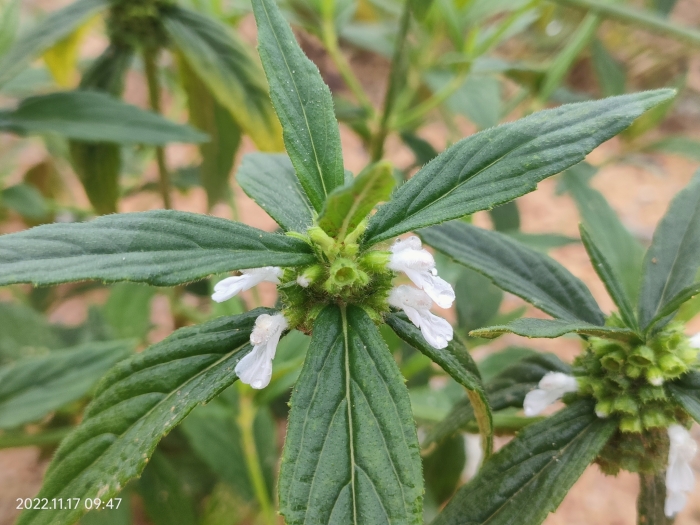Thumbai
(Leucas aspera)
Thumbai (Leucas aspera)
/
/

© Ong Jyh Seng
CC BY-SA 4.0
Image By:
© Ong Jyh Seng
Recorded By:
Copyright:
CC BY-SA 4.0
Copyright Notice:
Photo by: © Ong Jyh Seng | License Type: CC BY-SA 4.0 | License URL: http://creativecommons.org/licenses/by-sa/4.0/ | Uploader: ongzi | Publisher: iNaturalist |

























Estimated Native Range
Summary
Leucas aspera, commonly known as Thumbai or Thumba, is an annual herb or undershrub that is part of the Lamiaceae family. It is widely distributed in tropical and subtropical regions of Africa, Asia, and Australia, often found in open grasslands, roadsides, and disturbed soils. It typically grows to heights of 6-24 inches (15-60 cm). Leucas aspera has a distinctive appearance with its small, tubular, white flowers that are borne in dense whorls at the stem tips, blooming throughout the year in its native range. The flowers are not only fragrant but also quite showy, attracting pollinators such as bees. The plant has simple, opposite leaves and square stems, characteristic of the mint family.
In cultivation, Thumbai is valued for its medicinal properties and is often used in traditional medicine gardens. It is also used ornamentally in xeriscaping due to its drought tolerance and ability to thrive in poor, sandy soils. It requires minimal care, making it a low-maintenance option for gardeners. While it prefers full sun, it can tolerate partial shade and is adaptable to a range of soil types, provided they are well-drained. Thumbai is not known for having aggressive roots or being particularly prone to diseases, making it a safe choice for various garden settings. However, it can self-seed prolifically under favorable conditions, which should be managed to prevent unwanted spread.CC BY-SA 4.0
In cultivation, Thumbai is valued for its medicinal properties and is often used in traditional medicine gardens. It is also used ornamentally in xeriscaping due to its drought tolerance and ability to thrive in poor, sandy soils. It requires minimal care, making it a low-maintenance option for gardeners. While it prefers full sun, it can tolerate partial shade and is adaptable to a range of soil types, provided they are well-drained. Thumbai is not known for having aggressive roots or being particularly prone to diseases, making it a safe choice for various garden settings. However, it can self-seed prolifically under favorable conditions, which should be managed to prevent unwanted spread.CC BY-SA 4.0
Plant Description
- Plant Type: Herb
- Height: 1-3 feet
- Width: 1-2 feet
- Growth Rate: Rapid
- Flower Color: White
- Flowering Season: Spring, Summer, Fall
- Leaf Retention:
Growth Requirements
- Sun: Full Sun
- Water: Medium
- Drainage: Medium, Fast
Common Uses
Bee Garden, Low Maintenance
Natural Habitat
Open grasslands, roadsides, and disturbed soils in tropical and subtropical regions of Africa, Asia, and Australia
Other Names
Common Names: Thumbai, Thumbe, Dronapushpi
Scientific Names: , Leucas aspera, Leucas dimidiata, Leucas dimidiata, Leucas minahassae, Leucas obliqua, Leucas obliqua, Leucas plukenetii, Phlomis aspera, Phlomis dimidiata
GBIF Accepted Name: